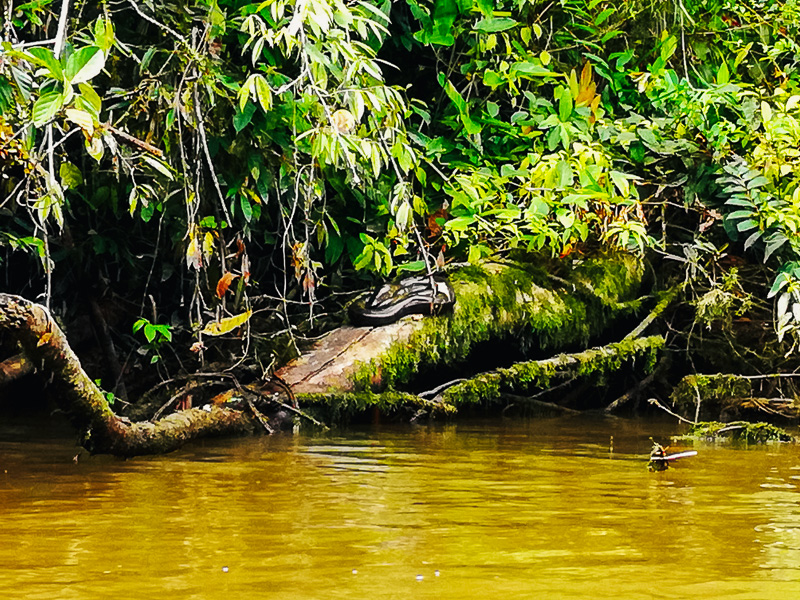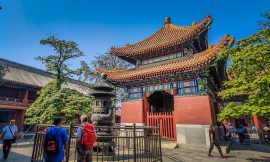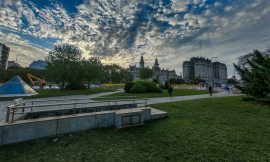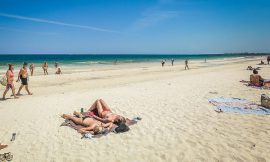On the third day, breakfast is served at 8 AM and we were scheduled to leave around 9.30 AM to go to the Indigenous settlement. We made stops when we spotted wildlife and reached the settlement around 11 AM. The people lived in wooden huts living off the land and hunting. A local lady showed us the process of making yuca bread. Yuca grows in the root like a tubercle. The women of the village are in charge of agriculture in the village whilst the men go hunting. Pulling out the root requires a lot of strength but the lady pulled it out with ease. She uses a machete to cut off the yuca from the root and makes an incision before handing it out to us to peel them. The root is replanted and it takes 48 hours for the leaves to grow again. It then takes 6-8 months depending on the climate for Yuca to grow again before it can be harvested.
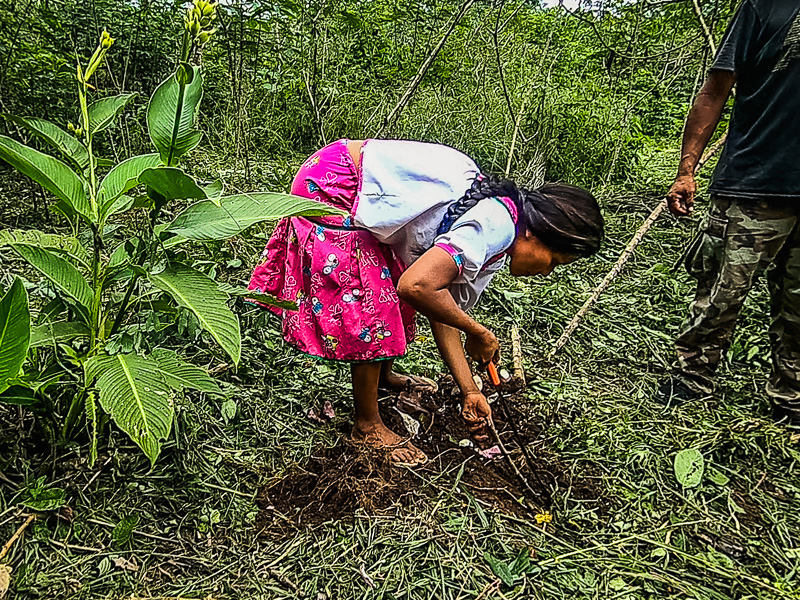

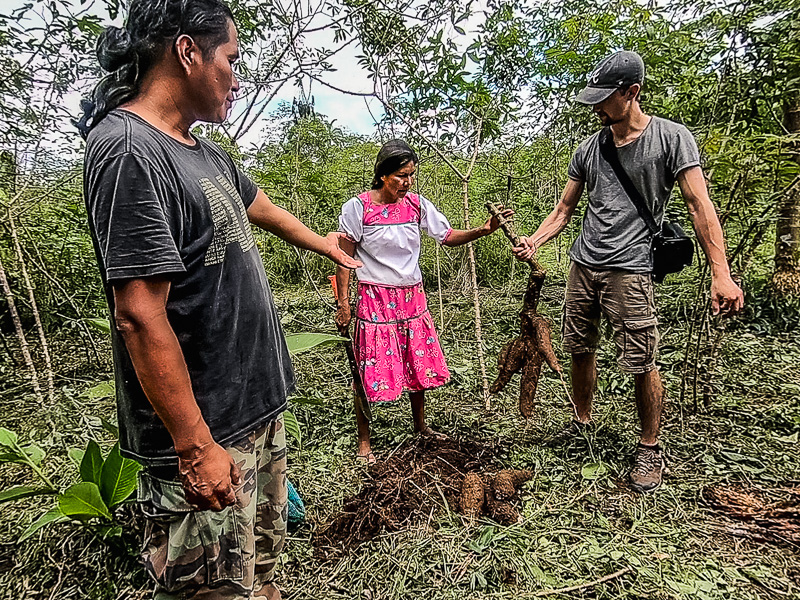

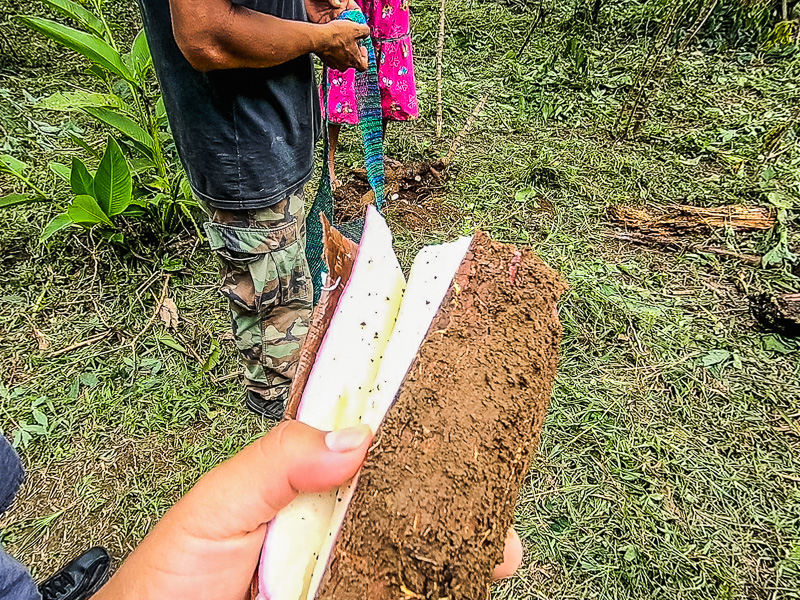

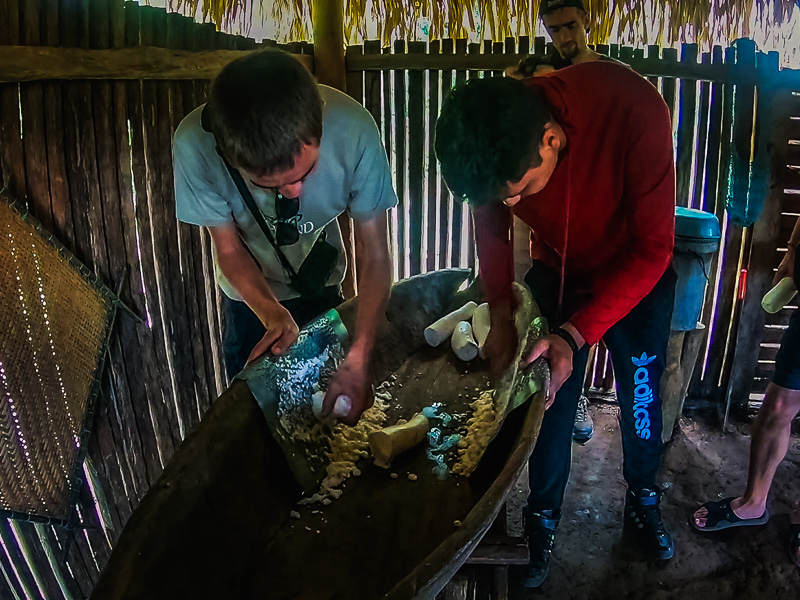

The group then heads into the hut to wash our hands and then take turns in grinding the yuca. The lady then puts the ground yuca in a flat wood-like woven utensil. This utensil is called an anaconda by the locals as it uses a constriction method to squeeze out the water from the ground yuca. The lady wraps the utensil over the yuca and hangs it on a pole. She uses a stick to rotate and squeeze out the water into a container. This liquid can be used to make a chili sauce, soup, or even a face mask. The dried yuca now has a solid coconut-like like texture. It is placed on a sieve and everyone crumbles it and rubs it against the sieve to thin it out and make yuca flour. The lady then pours some of the flour onto a hot wood-fired plate. She spreads it evenly and presses it down with a wooden bowl to flatten it out. No oil, salt, or any other condiments are used, it is pure yuca. After a couple of minutes, the lady flips it over to cook the other side. The end product is a delicious tortilla shaped flatbread with a little crunch. Total prep time – approximately 45 mins. The locals have it with some hot sauce and make burrito like meals. We had it with the meal we’d been given at the lodge to take to the settlement.
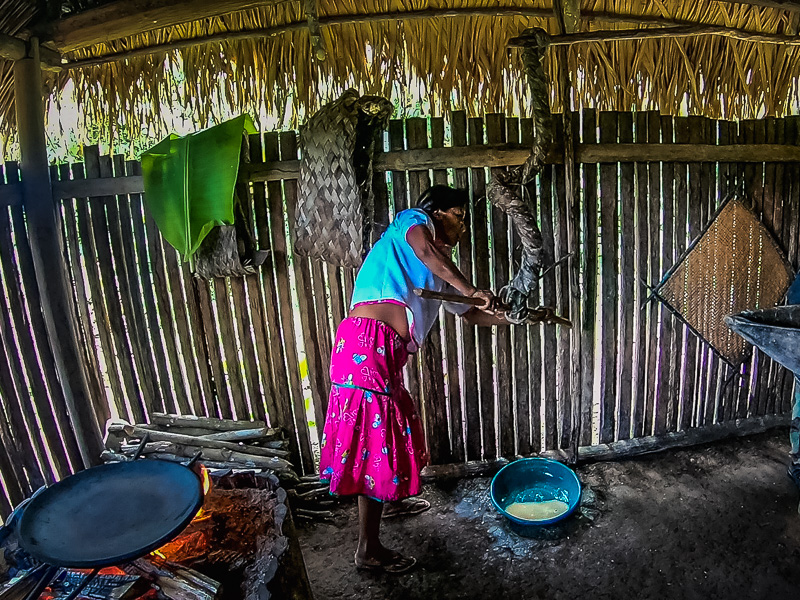

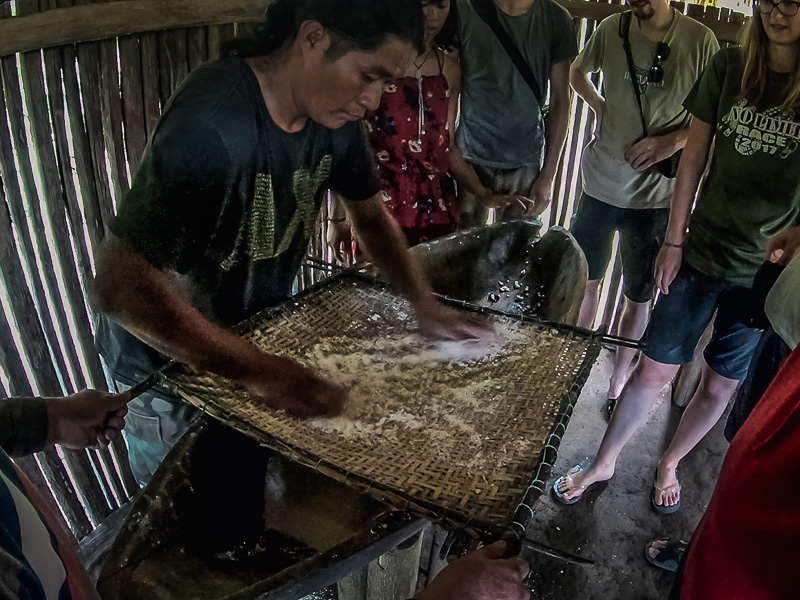

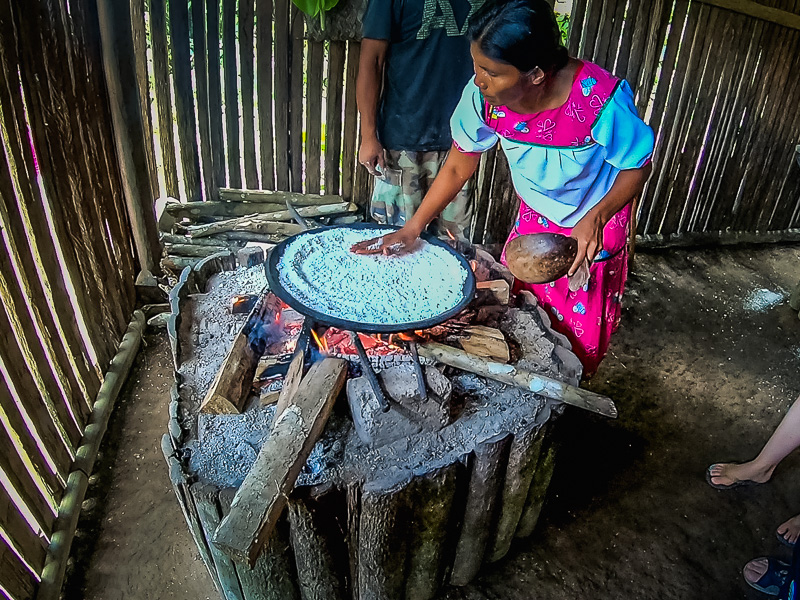

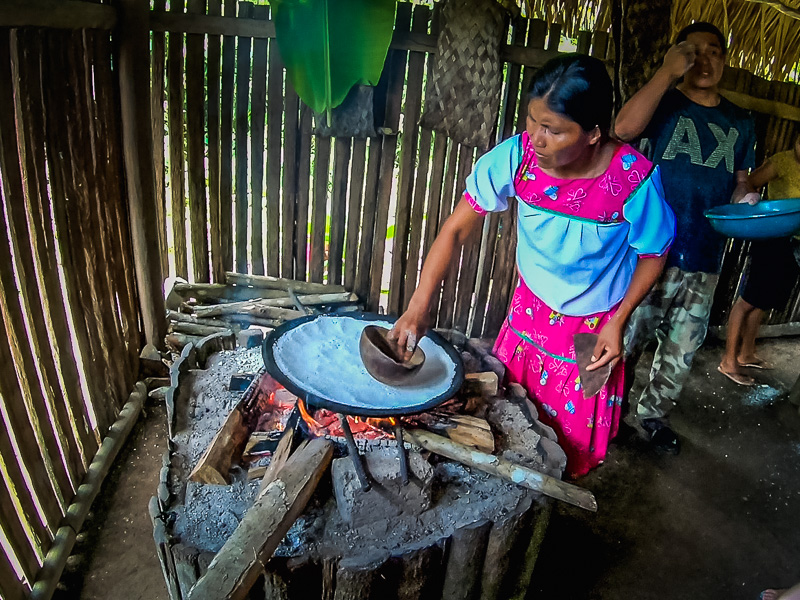

We finished lunch around 1 PM and some of the local kids came to lay out handicrafts their families had made. There were necklaces, rings, and wristbands for sale. Following lunch, there was some time to play football with the locals. It got really hot in the afternoon and at around 2.30 PM everyone was exhausted so we took a dip in the river to cool off. The canoe came to pick us up around 3 PM and we head to the shaman’s village. We made a quick stop at a small village to buy some snacks and water. We got to the shaman’s village around 4 PM. The talk and demonstration with the shaman cost 5 USD1 and lasted 1 hour. He mainly talks about his experience of becoming a shaman. There is also a demonstration of how to use a blow gun and an opportunity to fire one. He also asked for a volunteer who wanted their face painted with achiote. The last demonstration was of a ritual cleaning on a volunteer. After the talk, we headed back to Laguna Grande for the last sunset of the tour around 5.30 PM.
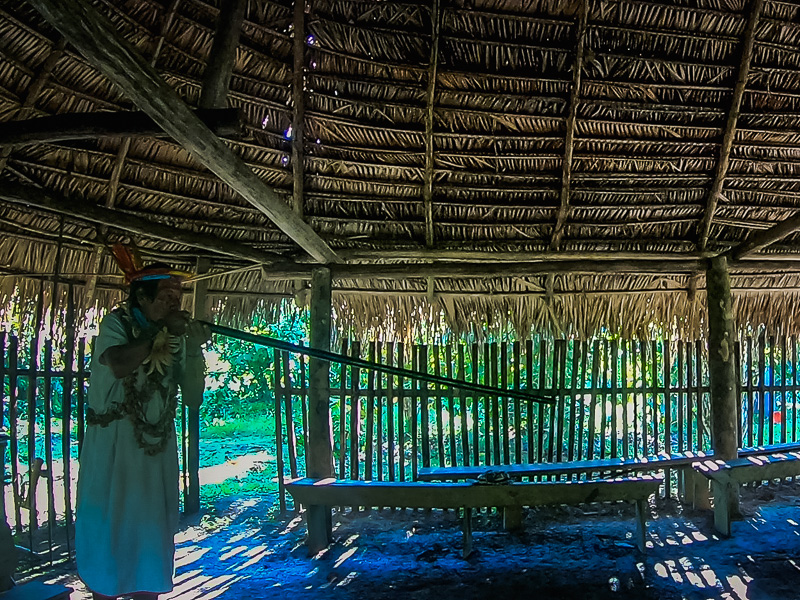

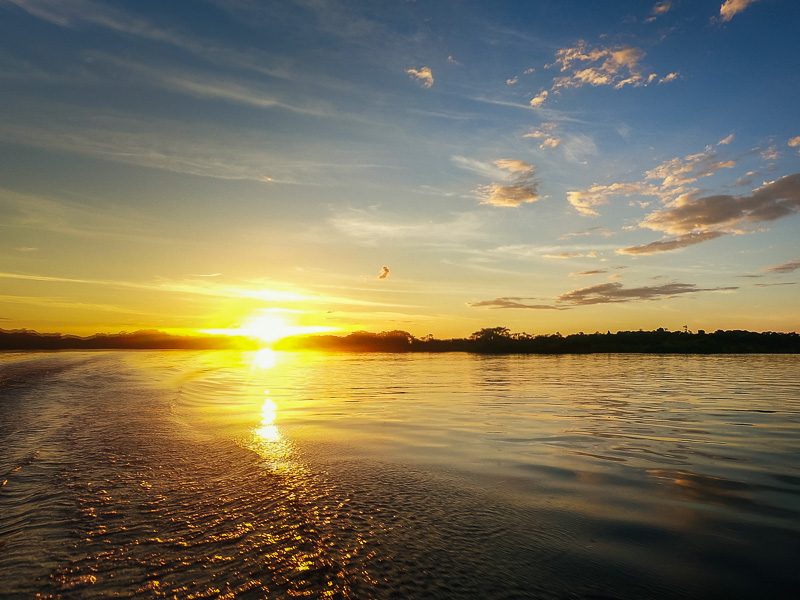

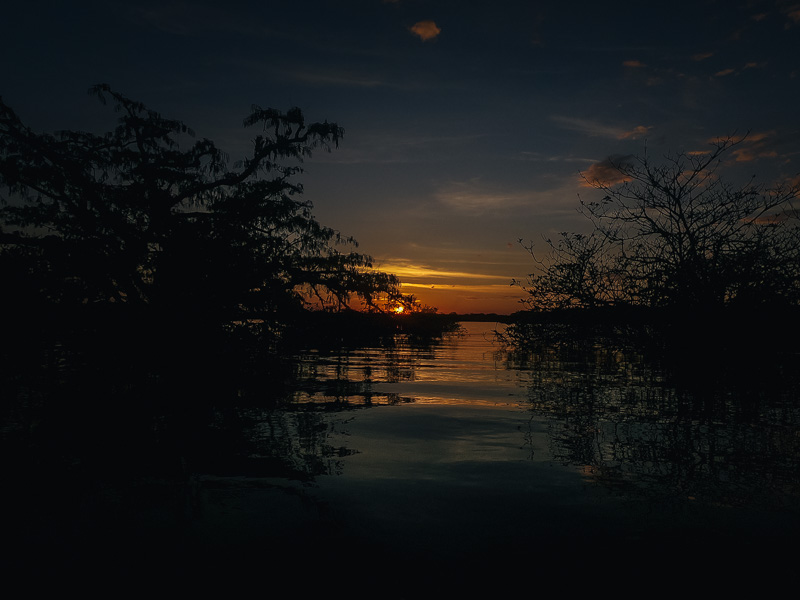

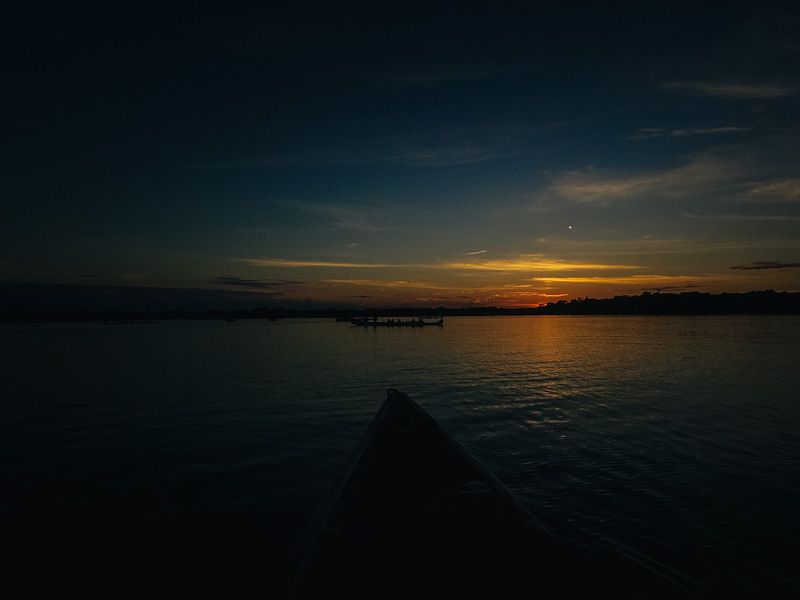

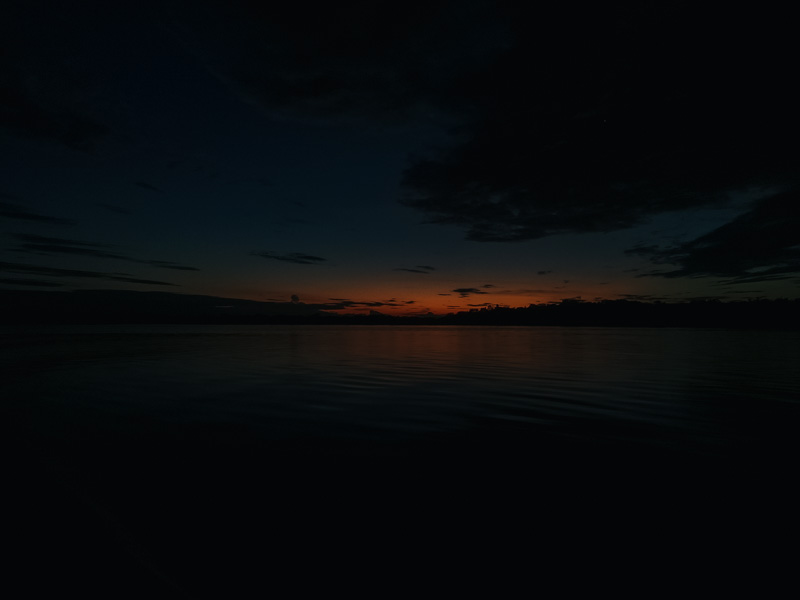

Day 4 - Homebound
The final day begins early in the morning to go out on the canoes for some bird watching at 6 AM. It had rained overnight so we didn’t see much and were back by 7.30 AM for breakfast at 8 AM. We left the lodge at 9 AM to go back to Lago Agrio. On the way back we came across a number of canoes by the shore. Turns out they had spotted an anaconda chilling on a tree and we got a chance to stop there for pictures. Due to heavy rainfall the night before, trees had fallen into the river so the driver had to accelerate over them. The canoe got stuck on one and we had to help out with getting the canoe back in the river. We had to be quick since another canoe could turn the corner and crash into us. We made it back to the main port by 12 PM to catch the bus back to the hotel meeting point where we’d parked the car.
